While not rejoicing in the devastating effects of global warming, researchers do acknowledge that it has created "an opportunity " to fill the huge gaps in our understanding of life in the mountains several millennia ago. The melting of the glaciers reveals treasures buried for a long time.
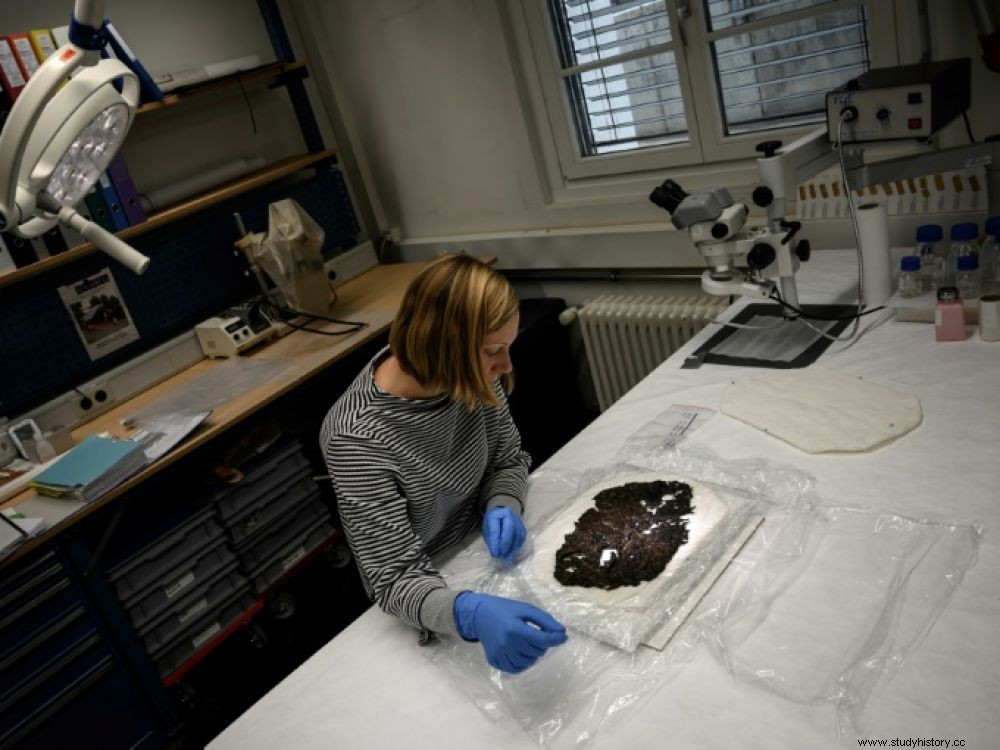
Conservator-restorer Johanna Kluegl of the Archaeological Service of the Canton of Bern, Switzerland, observes on October 6, 2020 a woven basket from the Neolithic period discovered at an altitude of 2,756 meters in the Bernese Alps
READ ALSO. In central Norway, global warming has caused the melting of ice sheets which, as they recede, have freed a multitude of vestiges preserved from the reindeer hunters of the Bronze Age to the Viking era.
The small group painfully climbed the steep slopes of a glacier in the Alps before finding what they were looking for:a vein of rock crystal. The scene took place some 9,500 years ago, and these Mesolithic men used the precious crystal to make their tools. So many deductions made by archaeologists, who can excavate this site from the extreme - and many others -, thanks to the melting of the alpine glaciers which frees artifacts from the gangue of ice which protected them from the ravages of time. , sometimes for almost 10,000 years.
While not rejoicing in the devastating effects of global warming, researchers do acknowledge that it has created "an opportunity "to fill in huge gaps in our understanding of life in the mountains thousands of years ago." no access “, explains to AFP Marcel Cornelissen, who took the expedition to the Mesolithic site at 2,800 meters above sea level, near the Brunifirm glacier in the eastern Swiss canton of Uri.
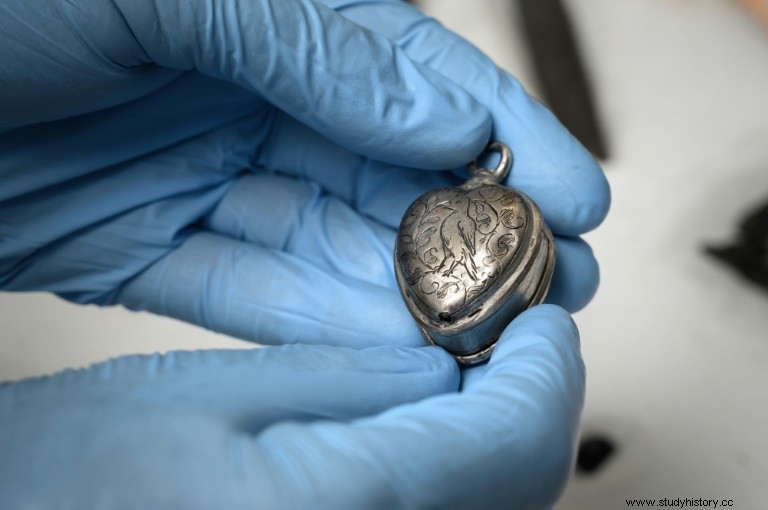
A 17th century pendant found in a glacier in the canton of Valais, held by archaeologist Pierre-Yves Nicod in Sion, Switzerland, on October 8, 2020. Credit:AFP - Fabrice COFFRINI
Mountains surveyed and frequented for millennia
Until the 1990s, it was commonly accepted that prehistoric men hardly ventured into high mountains. Everyone remembers "Oetzi", the perfectly preserved body of a 5,300-year-old hunter discovered in 1991 in Austria and thought to be an exception. But discoveries, sometimes spectacular, have revealed that the Alps had, on the contrary, been surveyed and frequented for millennia. "We now know that people climbed mountains up to 3,000 meters to look for crystals and other raw materials ", explains an archaeologist from the canton of Uri, Christian auf der Maur.
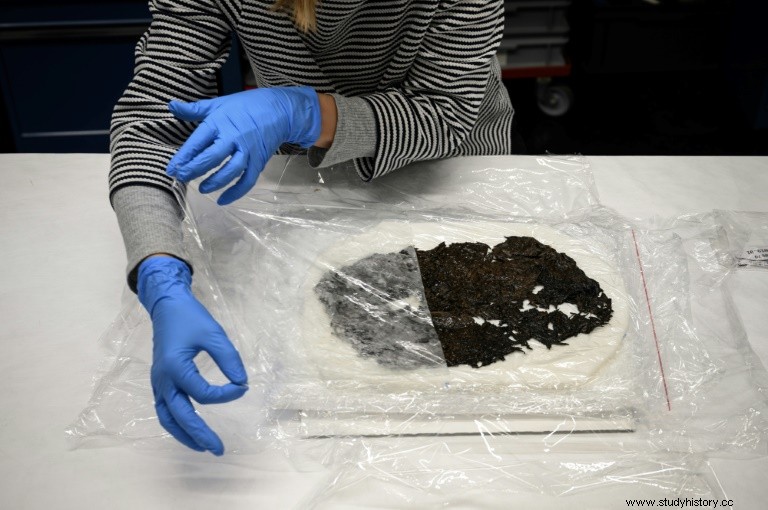
A Neolithic woven basket found on the Schnidejoch pass in the Bernese Alps, 2,756 meters above sea level, photographed in Bern, Switzerland, on October 6, 2020. Credit:AFP - Fabrice COFFRINI
A quiver made of birch bark, which was made around 3,000 BC, was found on the Schnidejoch pass, in the Bernese Alps, at more than 2,700 meters above sea level, thus confirming the richness of this site . Leather pants and shoes, belonging to the same hunter, were later discovered along with hundreds of other items some 6,500 years old. "It's very exciting, because you find things that you wouldn't usually find in excavations ", because the ice preserved them, rejoices the archaeologist Regula Gubler. And for proof, in September she discovered knotted raffia, probably 6 millennia old, which looks like a fragile woven basket in the same material discovered the year last.
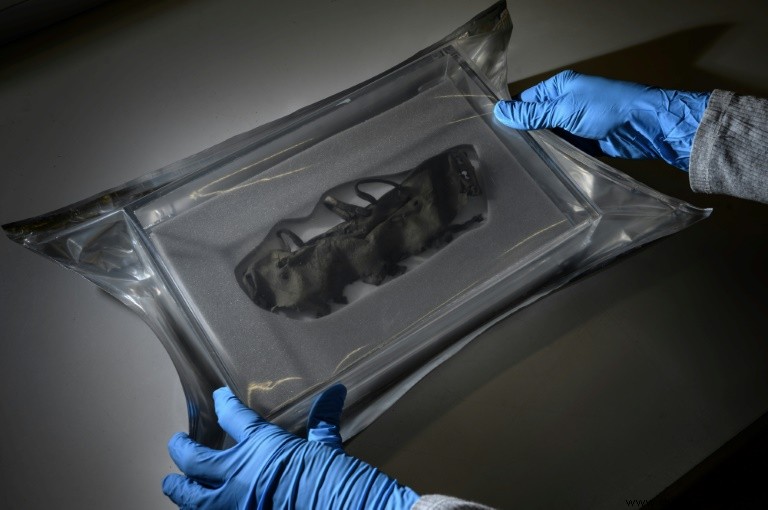
A shoe of a prehistoric man discovered on the Schnidejoch pass in the Bernese Alps, more than 2,700 meters above sea level, photographed at the archaeological service of the canton of Bern on October 6, 2020. Credit:AFP - Fabrice COFFRINI
An "archaeological emergency"
If climate change is a boon to discovering these objects, it is also the reason for their rapid destruction once they are again exposed to the elements. "The retreat of the glaciers and the melting of the ice fields is already too far advanced. I don't think we'll find another Oetzi ", regrets Marcel Cornelissen. Faced with the emergency, archaeologists are counting on hikers and other mountaineers to help them save what can be saved.
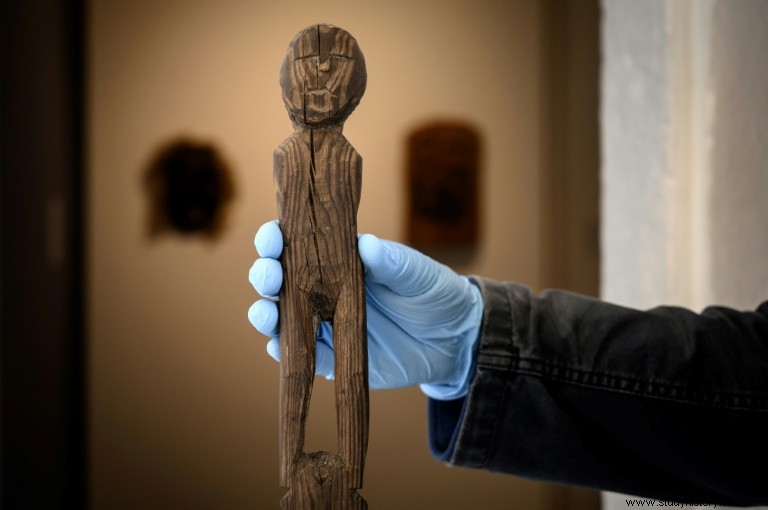
An Iron Age sculpture discovered in 1999 on the Arolla glacier in the Swiss canton of Valais, held by archaeologist Pierre-Yves Nicod in Sion, Switzerland, October 8, 2020. Credit :AFP - Fabrice COFFRINI
Sometimes it takes a lot of time and a lot of luck, says archaeologist Pierre-Yves Nicod, who organized an exhibition on the archeology of glaciers two years ago. He had heard of a discovery by two Italian hikers, who in 1999 came across a wooden sculpture on the Arolla glacier, 3,100 meters above sea level. Picked up, cleaned, the sculpture of about one meter high ended up on the wall of their living room.
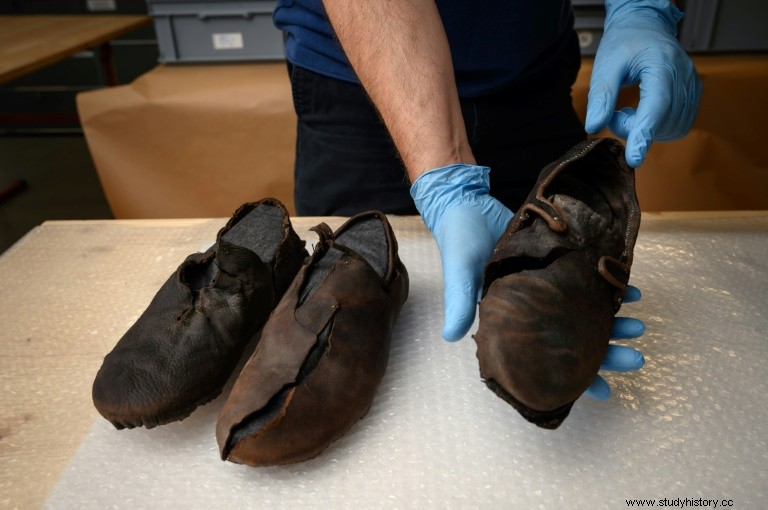
A 17th century shoe found in a glacier in the canton of Valais, held by archaeologist Piere-Yves Nicod in Sion, Switzerland, on October 8, 2020. Credit:AFP - Fabrice COFFRINI.
In fact, it was "an Iron Age Celtic item ", more than 2,000 years old but whose function remains unexplained to this day. For Pierre-Yves Nicod, it is urgent "to raise awareness among the population who could come across this kind of artifact ". "This is an archaeological emergency ", he insists.
